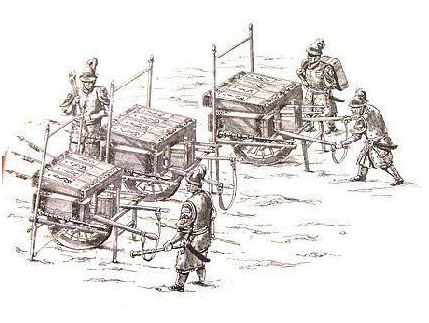I have been fascinated by the China since I was a child. Their civilization has existed for thousands of years. Periodically, they would have a strong leader who would unite the country and provide stability for exploration, innovation and trade. Then their empire would collapse from corruption and civil war or external invasion. After a time, a strong leader would arise to unify the nation and the cycle would repeat. New emperors would often make sweeping changes including burning libraries and killing intellectuals.
They have invented and forgotten many technologies that the West believed were invented in the West. Dr. Joseph Needham was a British scientist who visited China during World War II. He travel widely and sought Chinese books about science and technology. In 1948, he proposed a project on Science and Civilization in China to the Cambridge University Press. The first book was published in 1954 and an additional twenty three volumes have been published. wrote a monumental exploration of the many firsts of China in 19XX. Some of their most important inventions were papermaking, the compass, gunpowder, and printing, etc.
A recently published book by Gavin Menzies claims that many of the inventions attributed to Leonardo da Vinci were actually copied from a Chinese technology encyclopedia written in brought to Florence by a Chinese expedition around 1435. Many of these designs had to do with warfare.
One of the great puzzles in the history of science and technology is the question of why Europe beat China to the great scientific revolutions that ushered in the modern industrial age. Part of the answer has to do with the influence of Confucianism on the Chinese culture. The emperors were careful to keep the practitioners of different technologies separate from each other in order to reduce social turbulence. It is ironic to consider that the Renaissance and launch of the Industrial Age in the West might have been triggered by the Chinese expedition to Florence.
The Chinese used gunpowder for both warfare and for fireworks displays. The Song Dynasty (960-1279) used gunpowder in rockets. Tubes of gunpowder were attached to arrows. The Ming Dynasty (1368 - 1644) made major innovations in rocketry. Hard wooden tubes full of gunpowder were capped with a sword or spear. Multi-rocket launches were pioneered with a single fuse igniting up to a hundred rockets. The Chinese moved multi-launch rockets to the Great Wall and used them against the Mongols.
Another innovation was putting a fused warhead in the rockets that would explode when the rocket landed.
The Mongols developed rockets during their wars with China. They ultimately conquered the northern part of China and acquired Chinese rocket technology and technicians. They employed rockets in their conquest of Russia and Easter Europe in the Thirteenth Century. The Ottoman empire used rockets in the siege of Constantinople in the Fifteenth Century. There is mention in Arab records of the use of Mongol Rockets in attacks on Bagdad in 1258. European nations continued developing rockets for use in warfare. The Germans attacked Britain with their advanced V-2 rockets in World War II. The Soviet Union captured German rocket scientists and used them to develop their own rocket technology. After Mao Zedong rose to power in the Chinese Communist Revolution in 1949, the Soviets shared their captured technology. The first Chinese Communist rocket was copied from a Soviet rocket that was copied from the German V-2.
Ancient multi-launch Chinese rockets:
